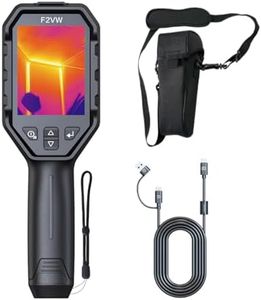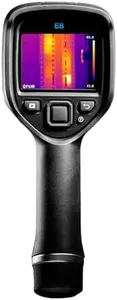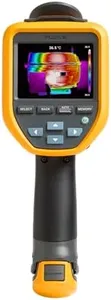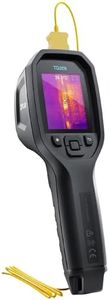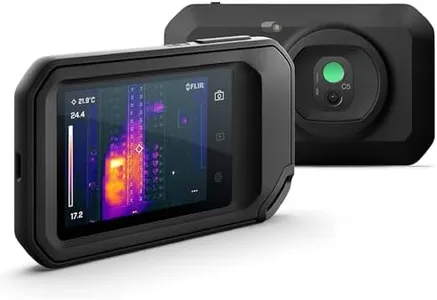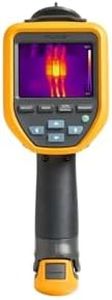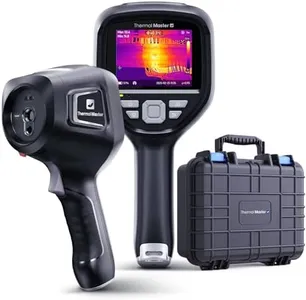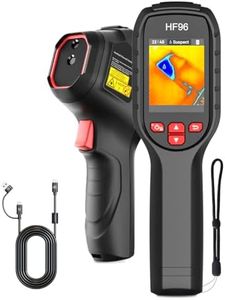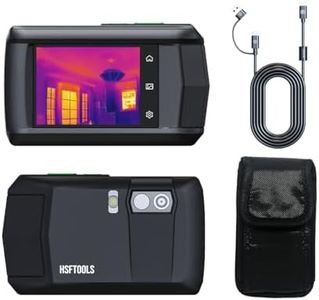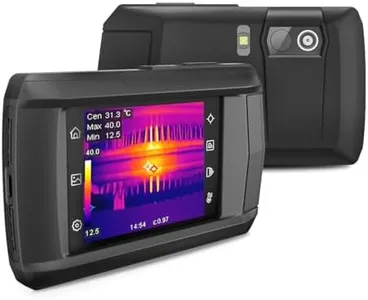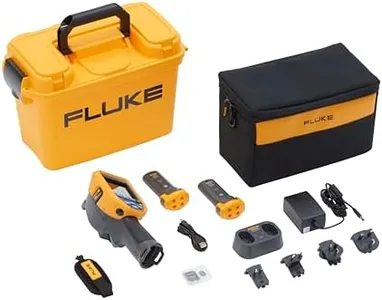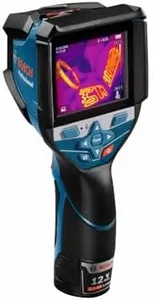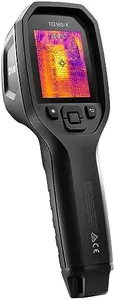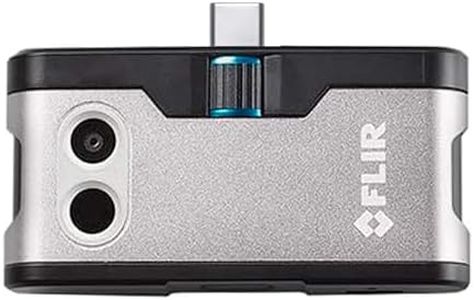10 Best Thermal Imagers 2025 in the United States
Our technology thoroughly searches through the online shopping world, reviewing hundreds of sites. We then process and analyze this information, updating in real-time to bring you the latest top-rated products. This way, you always get the best and most current options available.

Our Top Picks
Winner
FLIR E8-XT - Commercial Thermal Imaging Camera with WiFi. High Resolution Infrared Camera Ignite Cloud
Most important from
268 reviews
The FLIR E8-XT is a handheld thermal imaging camera designed for a variety of applications, including outdoor security and troubleshooting in commercial environments. One of its standout features is its high resolution of 320 × 240 pixels, which allows users to identify and troubleshoot hidden faults effectively. The incorporation of patented MSX technology enhances images by overlaying visual details on thermal data, making the images clearer and more informative. With a temperature range from -20 to 550°C, it covers a wide spectrum, catering to various needs in both industrial and residential settings.
The FLIR Ignite Cloud integration is another strong point, offering users a convenient way to store, edit, and share thermal images efficiently. The camera’s wireless connectivity is also a plus, making it easy to transfer data without the hassle of cables. Additionally, the generous warranty of 2 years for parts and labor and 10 years for the detector provides peace of mind regarding the product's durability and reliability.
There are a few aspects that could be drawbacks for some users. Firstly, while the E8-XT is portable, it may not be the most lightweight option available, which could be a consideration for those needing to carry it for extended periods. The battery life, while adequate for most tasks, might not meet the demands of all-day usage in demanding environments, so planning for charging or spare batteries may be necessary.
Most important from
268 reviews
Fluke TiS75+ 27HZ, Thermal Imager
The Fluke TiS75+ is a thermal imager that stands out for its ruggedness and reliability, making it suitable for industrial settings where tools may face harsh conditions. With a tough design that can endure a 2-meter drop and an IP54 rating for water and dust resistance, it’s built to last, which is a strong advantage for maintenance professionals and field technicians.
In terms of functionality, this thermal camera offers features like asset tagging and voice annotation. Users can sort thermal images by asset and record real-time observations, which can significantly enhance the efficiency of maintenance programs. The ability to connect to a computer for easy image organization is also a plus, as it allows for better tracking of inspections over time.
There are some considerations to keep in mind. While the rugged design is a strong selling point, the weight of 7.55 pounds may be cumbersome for extended use, especially when carrying it around job sites. Additionally, users looking for advanced imaging features such as image fusion might find the TiS75+ lacking. Battery life is essential for fieldwork, and while it’s not detailed in the specifications, it’s important to consider if it meets your operational needs. The Fluke TiS75+ thermal imager is well-suited for those who value durability and practical features for asset management, but it may not be ideal for users needing more advanced technical capabilities or a lighter device.
FLIR TG268 Thermal Imaging Camera with Spot IR Super Resolution 320x240 (160x120 Native IR) and Bullseye Laser: Commercial Grade Infrared Camera for Building Inspection, HVAC and Electrical
Most important from
1395 reviews
The FLIR TG268 is a solid choice for people needing a thermal imager for building inspection, HVAC, or electrical work. It features a native infrared resolution of 160x120 pixels, which is then enhanced to 320x240 through FLIR's Super Resolution technology, giving you clearer and more detailed images than many basic models. The MSX image fusion technology further improves image clarity by overlaying visual details from the built-in 640x480 digital camera onto the thermal image. This means you get a thermal picture that's easier to interpret, which is helpful if you’re not an expert.
The built-in bullseye laser pointer is a nice touch, showing exactly where the temperature reading is taken, making measurements more precise and easier to target. Durability is a strong point: the TG268 is IP54 rated, meaning it is protected against dust and splashing water, and it has a rugged, drop-tested design. This makes it reliable on job sites that can be rough on tools. Battery life should be adequate for typical daily use, powered by a rechargeable lithium-ion battery.
The thermal resolution, while enhanced, is lower than some higher-end models that offer native resolutions above 320x240, which might matter if you need very fine detail. The plastic body makes it lightweight but might not feel as premium as metal-bodied options. The FLIR TG268 balances image clarity, ruggedness, and ease of use in a compact package, making it a practical tool for professionals who want reliable thermal imaging without complex features or a very high price.
